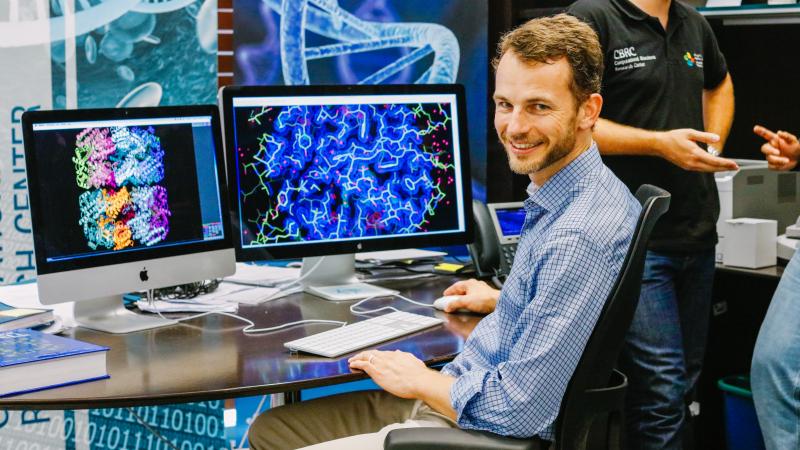By Tasneem Dalwai
There are certain moments cells need to migrate and make new connections. These migrations need to be strictly controlled, as an enhanced movement of tumor cells can allow cancer to spread through the body, whereas too limited mobility can facilitate neurodegenerative diseases.
Structural biology helps researchers in understanding how proteins precisely control cellular movements and provides essential clues for designing more effective cancer therapies.
Prof. Stefan Arold and his group at the Structural Biology & Engineering Lab (STRUBE) are dedicated to identifying the molecular basis of the function and (de)regulation of proteins central to cellular key signaling networks.
In this video Dr. Afaque Momin, a Postdoctoral researcher working with Professor Stefan Arold explains the mechanism by which the protein tyrosine kinase 2-beta (PYK2) controls cell movement and survival through its capability to sense cellular calcium levels.
His research was recently published in the Nature Communications Biology Journal. Dr. Afaque's research interest include using physical methods to study biological systems on a molecular level and elucidating the molecular function, regulation, de-regulation, frameworks, and dynamics of proteins.
He combines computational methods such as molecular dynamics and bioinformatics, with experimental methods like biophysics, X-ray crystallography, and nuclear magnetic resonance.
In his research paper Dr. Afaque explains how PYK2 senses calcium indirectly, through binding to another protein, named calmodulin. Understanding its activation can provide essential clues to tailor therapy. These findings now provide a stepping stone to block PYK2 activation in cancer or promote it in neurological dysfunctions.
To view the research paper: PYK2 senses calcium through a disordered dimerization and calmodulin-binding element | Nature Communications Biology Journal

